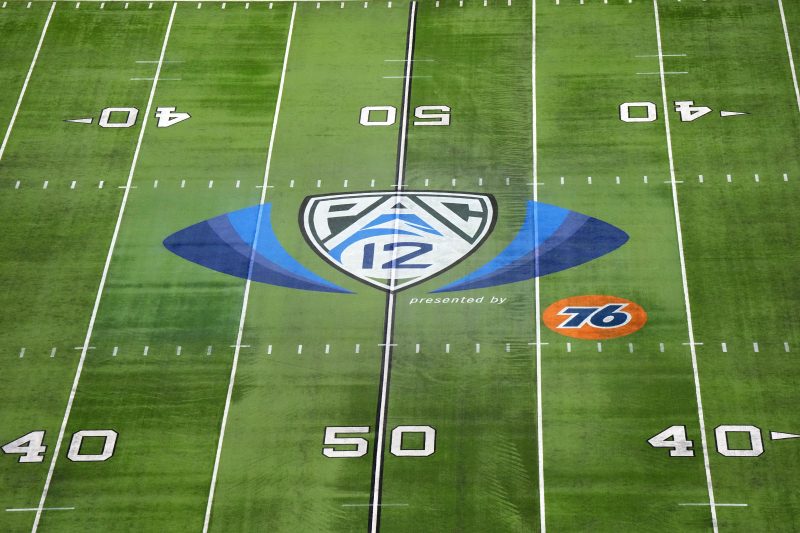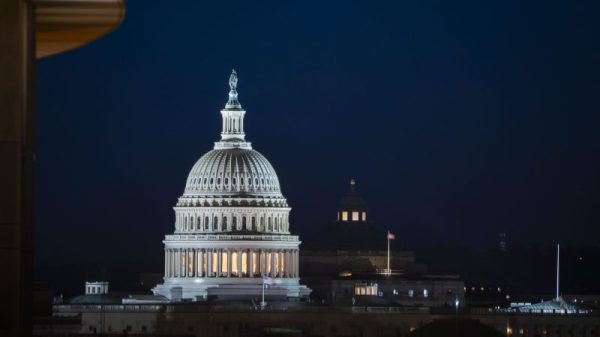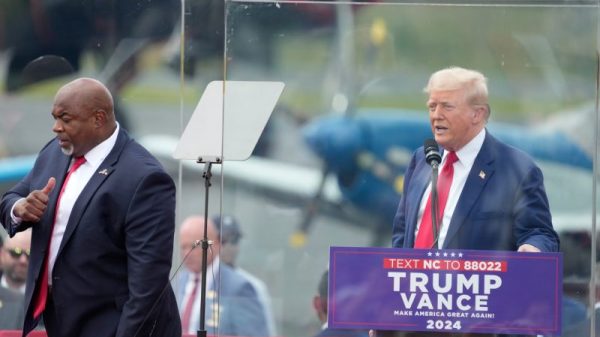
In the week since Washington State and Oregon State resurrected the Pac-12 brand and executed a hastily-arranged coup against the Mountain West, the level of angst about the next round of conference realignment has soared amongst schools outside the so-called power conferences.
For more than a decade, those schools have been realignment passengers trying to hang on to life rafts as the Big Ten, SEC, ACC and Big 12 reshaped the landscape. But the revival of the Pac-12 — and its ability to gut the Mountain West of its most valuable members — has put several schools and conferences into an unfamiliar position.
For the first time, some of these programs outside the Power Four have agency over their future. But they are also faced with tough choices, each of them laden with risk in an uncertain environment where distrust is running wild and the optimal outcome is unclear.
In the wake of Boise State, San Diego State, Fresno State and Colorado State jumping from the Mountain West and joining Washington State and Oregon State in the new Pac-12, USA TODAY Sports spoke to 10 people connected to the current realignment environment. All of them spoke on the condition of anonymity due to the sensitive nature of the conversations happening across college sports.
Though it’s hard to predict how the shuffling will unfold, and particularly where it will end, there’s little doubt about its potential to touch every conference in the so-called “Group of Five,” as well as schools currently playing football in the Football Championship Subdivision.
As a result, athletics directors and school presidents in those leagues have been scrambling for information about their options, while conference commissioners have been trying to game out various scenarios and gauge whether their members are solidly committed or have a wandering eye.
It’s a lot to process. And as always in realignment, trust is in short supply. But any discussion of what’s going to happen starts with the following reality: The new Pac-12, which now has six committed members, will add more.
And for schools like Memphis, Tulane, UTSA and South Florida — all current members of the American who have been contacted to some degree by representatives of the new Pac-12, according to people involved in the discussions — there is an undeniable allure to a perceived conference upgrade.
But there’s also hesitation on multiple levels.
Where do AAC members stand?
While news of the Pac 12’s rebirth may have caught some people off guard — including within the Mountain West, where some administrators now feel warnings about a raid were not taken seriously enough — it was not a surprise to members of the AAC.
In fact, according to people with insight into that league’s internal discussions, new commissioner Tim Pernetti had months ago laid out a scenario where Washington State and Oregon State would use the significant assets they control from the Pac-12’s breakup to form a so-called “best of the rest” conference that would target some AAC members.
Pernetti’s prescience has bought him some credibility within his membership — and perhaps some time.
At Memphis, arguably the most attractive school not currently in a power conference, there is clearly some intrigue about the new Pac-12, which would theoretically provide a more attractive group of opponents in both football and basketball. But there are also concerns, according to people familiar with the thinking of school officials.
The first level of those concerns revolves around simple math: Until the Pac-12 lands a media deal, there’s no guarantee of a significant increase from what Memphis makes in the AAC (estimated to be in the $8 million-$9 million range). But the valuations being discussed for the new Pac-12 by its media consultants in the $10 million-$12 million range are only theoretical at this point, and may not make a meaningful difference financially when you consider increased travel costs.
Crucially, though, maximizing the value of the new Pac-12 is also going to depend on selling a true “best of the rest” configuration that Memphis and others would need to commit to with a Grant of Rights agreement that locks them into the league for the length of the contract.
That illustrates the other reason why patience may win out at Memphis. After an unsuccessful pursuit of Big 12 membership, school officials there are now eyeing the ACC as a potential landing spot in the next handful of years.
Leagues must consider future media deals
Even if the ACC retains Clemson and Florida State in the short term — recent reports indicate those two schools are now open to staying in the league under a new financial model and dropping their litigation to become free agents — hardly anyone believes the ACC is going to just sit still for the rest of the decade.
That’s because of the looming specter of 2030, when negotiations will ramp up on new media deals for the Big Ten, Big 12, SEC and College Football Playoff. There will undoubtedly be another major realignment around those negotiations, just as there was the last two cycles, and that is when the ACC will be at its most vulnerable unless it can get ESPN to agree to massive changes in its own deal, which runs through 2036.
Essentially, what Memphis officials have to figure out is whether it’s worth joining the Pac-12 now for a bit more money, but less flexibility to jump again if the ACC proactively expands before 2030.
Again, tough choices.
Could Air Force move to AAC?
Other schools have different motivations. Tulane, for instance, is also weighing travel cost issues and its current academic fit in the AAC with schools like Tulsa, Rice and the military academies.
Meanwhile, Pernetti — a former media executive who helped launch CSTV (now CBS Sports Network) and ran IMG’s college sports wing — has publicly acknowledged that he’s working to lock down a private equity deal that would infuse cash to AAC members.
He’s also, according to two people with knowledge of the discussions, hoping to get Air Force to join Army and Navy in his league with the Mountain West now vulnerable. There’s belief within the AAC that having all three service academies would give the league some protection both in CFP negotiations and in the halls of Washington, D.C., should power conference schools try to engineer a full breakaway from the NCAA that would undoubtedly catch the attention of lawmakers.
Whereas AAC schools are questioning whether the Pac-12 would be a true step up or more of a lateral move, there’s no question about those left in the Mountain West: They want in.
Heat is on Mountain West
Formed in 1998 when a group of schools broke off from the Western Athletic Conference, the Mountain West now faces an existential threat under similar circumstances a quarter of a century later.
Within the Mountain West, there was a belief that they would ultimately absorb Washington State and Oregon State, who did not have anywhere else to go as the Pac-12 dissolved. But when those schools could not come to a long-term scheduling agreement with the Mountain West, they managed to lure Boise State, Colorado State, Fresno State and San Diego State into the unknown with a promise that they’ll do much better than their $5 million distribution from the Mountain West, and a belief that they won’t have to pay the full boat on their exit from a destabilized, crumbling conference.
Indeed, the heat has now shifted to Mountain West commissioner Gloria Nevarez, whose league could be down to six if Air Force jumps to the AAC and UNLV eventually lands in the Pac-12, which seems likely once it gets in-state political clearance to change conferences without being tied at the hip to Nevada.
In a sane landscape, some people with ties to the Group of Five would like to see the Mountain West remnants come to the negotiating table and perhaps merge with one of the other leagues. But given the egos and self-preservation instincts that drive many of these decisions, the more likely path is that the Mountain West tries to add some regionally congruent schools from C-USA like New Mexico State and UTEP (they have not yet been contacted by the Mountain West, per people with knowledge).
Bloated FBS doesn’t need to get bigger
The Pac-12’s resurrection, though, has forced Group of Five administrators to acknowledge the reality that either one of the current leagues will fold or more FCS members are going to be brought up to FBS to backfill amidst the game of musical chairs.
Both options are bad, but the latter may be worse. FBS is already up to 134 members, with Delaware and Missouri State coming in 2026. Schools like James Madison, Kennesaw State and Jacksonville State recently made the move. Last fall, the NCAA increased the transition fee from $5,000 to $5 million to discourage a bloated FBS from getting any bigger. There’s already enough of a disparity between the haves and have-nots in college football, and adding more of the latter only dilutes CFP revenue and adds legislative headaches for the Big Ten and SEC.
All of this uncertainty is yet another headache for schools already reeling from past bouts of realignment, the House vs. NCAA settlement that will potentially cost them millions and adapting to the new world of NIL.
But the Pac-12’s bold move to wreck the Mountain West is also forcing some entities to think differently about the future. Is the Group of Five better off with warring factions trying to poach from each other, increase travel budgets and pull up from the FCS to survive? Or would it be better for the leaders to get in a room, pull together a true “best of the rest” conference that has wings on both coasts and then work in concert to have other leagues with geographic balance?
Nobody has ever had that conversation in a meaningful way. This time, angst and uncertainty may force it to happen. But as always in college sports, getting people to do anything hard and complicated in service of a better outcome may be too high a bar to clear.


























